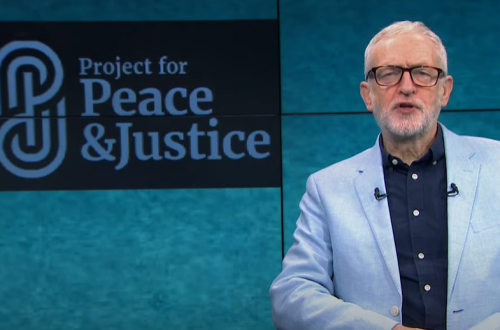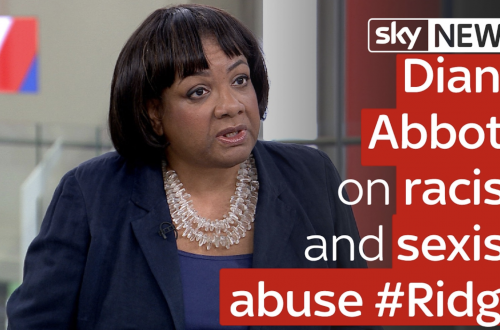Here’s the background:
A state-funded Islamic school in Birmingham unlawfully discriminated against pupils when it separated them by sex from age nine, a court has been told.
The court of appeal case could lead to other schools that practise similar segregation across the country having to make drastic changes to how they operate, or to split into separate single-sex schools.
The schools inspectorate, Ofsted, alleged that segregating pupils within a mixed-sex school was unlawful discrimination as it launched an appeal against a November 2016 judgment, in which the high court found that segregation did not mean either boys or girls were treated unfavourably.
This case raises some thorny issues. Is it discriminatory to segregate the sexes within a single school? It has been argued that the practice is not discriminatory as both sexes are equally restricted. However a letter in yesterday’s Guardian insists that it is:
We recognise the existence of single-sex schools but our concerns are with co-educational faith schools that apply gender segregation throughout the school day. It is as abhorrent as segregating people according to their race or sexuality.
It might seem odd to accept single-sex schools (as the letter writers seem to) but object so strongly to segregation within a single establishment.
One argument in favour of drawing this distinction might be derived from the rationale lying behind these different schools. All-female schools, in particular, have been popular partly because they are perceived to help girls gain academic confidence. The fact the girls also eat and socialise in a single sex environment is just a by-product, not an end in itself. Within a single establishment, by contrast, it would be easy to teach the sexes separately but still allow them to mix outside classes. However even here there are perhaps reasons for keeping boys and girls apart which don’t necessarily spring from a conservative or religious mindset. Here’s a secular defence of single sex education which touches on the social as well as purely educational alleged advantages.
For me it’s not the segregation itself which is the biggest problem. It’s the combination of gender segregation with evidence of a bigoted ideology at work. This is present in the current case – it is alleged that books in the Al-Hijrah school library promoted blatant discrimination against women:
One said a wife was ‘not allowed to refuse sex to her husband’ and another said ‘women are commanded to obey their husbands and fulfil their domestic duties’.
This indicates that boys and girls may well not be expected to take equal places in society. Is there any evidence to support such a suspicion? Back in 2006 it was noted that older boys had better maths provision than girls. However in 2011 the inspectors observed that girls were doing better than boys in science. And currently pupils of either sex who choose subjects which go against traditional gender boundaries may be disadvantaged.
All options subjects at key stage 4 are available to both boys and girls. However, occasionally an option subject does not take place for one group or another because there is not enough interest. This can disadvantage one gender. Currently, for example, there is no food technology running for boys in Year 11 this academic year because only a small number wanted to take it, whereas it is running for girls.
Perhaps educationally the disadvantages may be experienced by both sexes – and interestingly, on a national level, Muslim girls seem to be overtaking boys at university. (By contrast the primary school I went to practised internal segregation and the boys studied Latin while the girls learned needlework. Admittedly this was back in the 1970s.) But there may be other ways in which gender segregation in this school, and others like it, has some discriminatory impact. For example the uniform policy for the school reflects a stark gap between the sexes – whereas the boys’ uniform is conventional the girls are required to wear, not just a headscarf, but also a long skirt with trousers underneath. This further amplifies the existing physical separation between boys and girls and reinforces modesty codes which fall disproportionately on women.
I’ve suggested that the specific rationale for any given instance of single sex education/segregation may have an impact on whether you find it acceptable. Parents might send a girl to a single sex school because they are keen for her to focus on education/career goals – or they might be anxious to protect her from contact with boys and hope she’ll be taught more traditional home making skills.
For this reason I think that some traditional single sex schools may be just as problematic as ones with internal segregation – if they exist because a particular community thinks the sexes need quite different training for life. Here’s one example, the strict boarding school attended by Aliyah Saleem.
An Islamist girls’ boarding school which taught pupils that men could beat women and gay people should be killed is facing closure after a pupil exposed its sharia-inspired rules.
The problem certainly isn’t confined to Muslim schools. For some ultra-orthodox Jewish girls, prospects are very limited.
Within the Charedi community women are often expected to finish education after secondary school and become a wife and mother. However, while at primary and secondary level, girls are given a broader education than boys whose studies focus more on religion.
Very few students at YHSGS go to university because, Rabbi Pinter said: “there isn’t the environment for Haredi girls to do that”, although some might do Open University courses such as Midwifery while continuing to live at home.
“Our experience is that the better educated girls turn out to be the most successful mothers. For us, that’s the most important role a woman plays.”
So to sum up, it’s the ideology in combination with segregation which is the real problem, I think. If the underlying drivers for gender segregation are regressive, then it makes no particular difference whether the segregation is between schools or within a single school.


